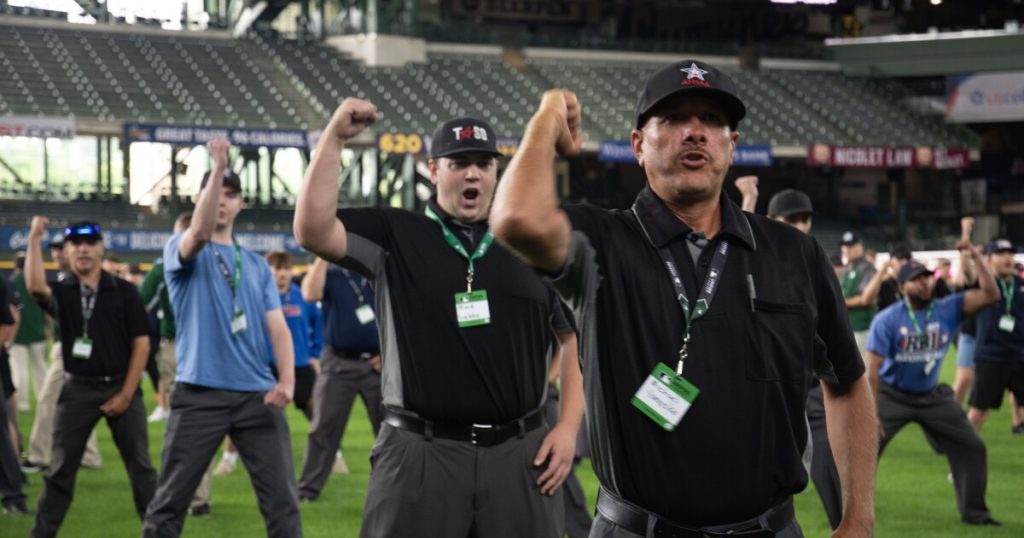MILWAUKEE — For baseball umpires, timing is crucial.
By the time registration commenced at 8 a.m., over 100 hopeful professional umpires had already gathered at the Milwaukee Brewers ballpark for MLB’s one-day umpire camp. This camp represents a potential first step for a select few toward a career as an MLB umpire, leading to a possible month-long development program in January and, hopefully, a subsequent position in the minor leagues or even the majors.
A Day at Umpire Camp
The demographics of the hopefuls at this camp varied widely, encompassing mostly — but not exclusively — men of different ages, backgrounds, and experience levels. They were instructed by a team of MLB umpiring officials, boasting over 300 years of collective professional experience, including 16 World Series.
During a three-hour session one Sunday morning in July, the instructors led practice exercises covering the fundamentals of umpiring, including calling batters out, home plate stances, and footwork for various game scenarios, utilizing a local youth baseball team for real-time practice.
Adapting to Technology in Umpiring
The pressure of the umpiring role has always been present, with players and managers voicing their dissent over calls. In 2008, MLB introduced replay reviews, adding a layer of scrutiny. Today, technological advancements have paved the way for widespread analysis, with tools like the strike zone graphic on broadcasts allowing fans to judge calls more easily. Umpire scorecards and videos of poor calls circulate widely on social media.
“Umpiring is better now than ever before, but expectations have skyrocketed,” said Jim Reynolds, an MLB umpire supervisor with 24 years in the major leagues. “It presents a challenging mental environment for our umpires.”
Future of Umpiring with Technology
Currently, MLB is testing a camera-based automated ball-strike system (ABS) that determines pitch locations in real-time. This could mean implementing a challenge system for players to contest balls and strikes, allowing for immediate visual verification.
Despite the heightened scrutiny and pressure, aspiring umpires remain optimistic. “We strive for perfection, and this technology helps us achieve that,” said Leo Dlatt, 21. “It’s just another tool to ensure the game’s integrity,” added Stephen Proudfit, 48, emphasizing the importance of a fair game over individual accolades.
Errors are an inherent part of the sport, as highlighted during this year’s All-Star Game, where the ABS challenge system had already been used. “Mistakes will always happen in our game. You can hit .300 and still be celebrated,” Proudfit noted, reflecting the enduring nature of the sport.



